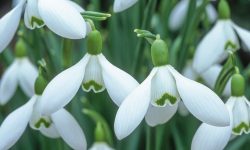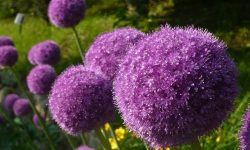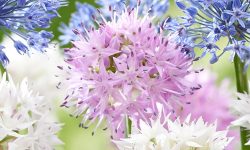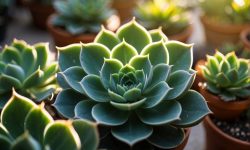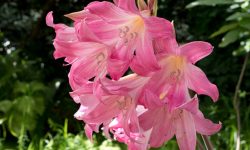Jasmine is more than just a beautiful flowering plant—it’s a living source of soothing fragrance and natural elegance. While often seen climbing trellises outdoors, jasmine can thrive indoors with the right care. Growing jasmine indoors allows you to enjoy its delicate white or pale pink blooms and signature sweet scent year-round, especially in cooler climates where outdoor growth isn’t always feasible.
Indoor jasmine varieties are adaptable and rewarding for gardeners who can meet their needs for light, humidity, and support. Whether you’re placing a jasmine pot by a sunny window or creating a fragrant indoor sanctuary, understanding the plant’s growth habits and care requirements is key to long-lasting blooms and healthy foliage.
Table of Contents
ToggleChoosing the Right Jasmine Variety for Indoor Cultivation

When selecting a jasmine variety for indoor growing, it’s essential to choose species that not only thrive in containers but also tolerate the lower light conditions typical of indoor environments. Among the most popular and reliable types is Jasminum polyanthum, also known as pink jasmine. This fast-growing climber is well-known for its clusters of intensely fragrant white flowers and pink buds that bloom abundantly indoors during late winter and early spring.
Another suitable option is Jasminum sambac, or Arabian jasmine, which is favored for its sweetly scented, larger flowers and bushier growth habit. It blooms repeatedly through the warm months under proper care, making it a rewarding indoor plant. This variety is also more compact than trailing species, which suits limited indoor spaces.
Jasminum grandiflorum, often called Spanish jasmine, is another excellent candidate for indoor cultivation. It offers a prolonged blooming season and larger blooms that add visual impact along with fragrance. For a more unusual choice, gardeners may consider Jasminum nitidum, or angel wing jasmine, which has star-like flowers and glossy leaves, adding a tropical touch to indoor plant collections.
When choosing a variety, consider your growing conditions, such as available sunlight, temperature stability, and space for vining or spreading. Compact or upright varieties are generally easier to manage indoors, while vining types benefit from training on trellises or supports. Matching the plant’s growth habit to your indoor space will ensure both aesthetic harmony and healthier growth over time.
Creating the Ideal Indoor Environment for Jasmine
To help jasmine thrive indoors, it’s essential to recreate its native subtropical climate. This involves providing consistent light, temperature, humidity, and airflow.
Light Needs for Healthy Growth
Jasmine prefers bright, indirect light for at least four to six hours daily. An east- or south-facing window is ideal, though intense afternoon sun may scorch the leaves. During low-light months, a full-spectrum grow light can support blooming. Rotate the plant occasionally for balanced growth.
Temperature Requirements
Maintain daytime temperatures between 65°F and 75°F (18°C–24°C) and slightly cooler nights around 55°F to 60°F (13°C–16°C) to promote blooming. Avoid sudden drafts and temperature swings from windows, heaters, or vents.
Boosting Humidity Indoors
Jasmine needs humidity above 50% to thrive. Use a humidity tray, room humidifier, or place the plant among others to raise moisture levels. Occasional misting is helpful, but don’t overdo it to prevent fungal issues.
Air Circulation and Placement
Ensure good air circulation to prevent mold and pests, using a low-setting fan if needed. Avoid strong drafts or hot air. Position the plant near a bright window with gentle morning sun and move it outdoors in warm months if possible.
Keep the Environment Stable
Once you find the right spot, avoid moving the plant frequently. Consistency in conditions supports strong growth and reliable flowering.
Potting, Soil, and Drainage Essentials
Selecting the Right Container
Choose a container with sufficient drainage holes to prevent water from accumulating at the bottom. Jasmine prefers slightly root-bound conditions, so select a pot that comfortably holds the root ball but isn’t excessively large. As the plant matures, gradual upsizing ensures that the roots stay healthy and growth remains manageable.
Terra cotta pots are a good choice because they allow excess moisture to evaporate more readily, helping to avoid soggy conditions that can lead to root rot.
Soil Composition for Healthy Growth
A well-draining potting mix is essential for indoor jasmine. Use a high-quality commercial mix formulated for houseplants, or create a custom blend of potting soil, perlite, and peat moss. The soil should retain moisture but drain quickly to avoid root suffocation.
Adding a small amount of compost can enhance nutrient content, but avoid heavy soils or those with poor drainage, which can lead to fungal diseases and root decay.
Watering Jasmine Indoors the Right Way
Proper watering is one of the most critical aspects of jasmine care indoors. These plants prefer soil that remains evenly moist but not soggy. Overwatering is a common mistake that leads to yellowing leaves, root rot, and fungal problems, while underwatering can cause flower buds to drop prematurely.
Always start by checking the top inch of soil before watering. If it feels dry to the touch, it’s time to water. Use room-temperature water and apply it slowly until excess begins to drain from the bottom of the pot. Make sure your container has proper drainage holes to prevent water from pooling at the roots.
During the active growing season—typically spring through early fall—jasmine requires more frequent watering as it uses more moisture to support new growth and flower production. In contrast, reduce watering during the plant’s rest period in winter, especially if it’s in a cooler room with lower light levels.
Avoid letting the soil completely dry out or remain consistently wet for extended periods. Striking a balance is key. Using a moisture meter or simply feeling the soil regularly can help develop a reliable watering rhythm that supports a healthy, blooming plant.
Fertilizing Indoor Jasmine for Robust Blooms
To encourage lush growth and abundant flowers, jasmine benefits from regular feeding during its active growing season. Use a balanced, water-soluble fertilizer with equal parts nitrogen, phosphorus, and potassium—such as a 10-10-10 or 20-20-20 formula—applied every two to four weeks from spring through early fall.
For better bloom performance, you can switch to a bloom-boosting fertilizer slightly higher in phosphorus once flower buds begin forming. Always dilute the fertilizer to half strength to avoid salt buildup in the soil, which can damage the roots.
During winter or periods of dormancy, reduce or stop fertilizing altogether to allow the plant to rest. Resuming feeding in early spring will help jumpstart new growth and prepare jasmine for another vibrant blooming cycle.
Pruning and Training Jasmine Indoors
Regular pruning is essential for keeping indoor jasmine healthy, compact, and full of blooms. Light pruning after each flowering cycle helps remove spent flowers and encourages new growth, while a more thorough shaping in late winter or early spring prepares the plant for vigorous development during the growing season.
Cut back any leggy, tangled, or weak stems to promote bushier growth and better air circulation. Always use clean, sharp scissors or pruning shears to prevent disease. Don’t be afraid to trim jasmine by up to one-third of its size if it becomes unruly indoors.
Training jasmine to grow on a small trellis, hoop, or stake adds vertical interest and helps manage its vining habit. Gently tie new stems to the support using soft garden ties, guiding their direction as they grow. With regular training and trimming, jasmine will maintain an elegant shape while producing more fragrant blooms.
Managing Pests and Common Indoor Issues
Indoor jasmine plants, while generally resilient, can be prone to several pests and environmental issues if growing conditions are less than ideal. Early detection and consistent care are key to keeping your plant healthy and bloom-ready year-round.
Dealing with Common Pests
Spider mites, aphids, whiteflies, and mealybugs are the most frequent pests affecting indoor jasmine. Spider mites are especially problematic in dry environments, leaving behind fine webbing and yellow speckled leaves. Aphids and whiteflies cluster on new growth, sucking sap and weakening the plant. Mealybugs appear as white, cotton-like masses on stems and leaf joints.
Inspect your plant regularly, especially on the undersides of leaves and near new growth. At the first sign of infestation, isolate the plant and wash affected areas with a strong stream of water. Follow up with insecticidal soap or neem oil spray applied every few days until the problem resolves. For persistent issues, consider horticultural oil or introducing beneficial predatory insects if growing in a greenhouse setting.
Addressing Leaf Yellowing and Bud Drop
Yellow leaves can result from overwatering, poor drainage, or low humidity. Adjust your watering schedule, improve drainage by ensuring the pot has holes, and increase humidity using a tray of water and pebbles. Leaf loss can also be triggered by sudden changes in temperature or light, especially when moving the plant between indoor and outdoor settings.
Bud drop is often caused by dry soil, insufficient light, or exposure to cold drafts. Keep soil consistently moist, increase light levels, and avoid placing the plant near windows or doors that allow in cold air. Inconsistent care during the budding phase can easily interrupt flower development.
Preventing Fungal and Bacterial Issues
High humidity without adequate airflow may lead to powdery mildew or leaf spot. Powdery mildew appears as a white coating on leaves and thrives in stagnant air. Improve ventilation with a small fan and prune crowded stems to allow light and air to penetrate the canopy. For treatment, remove affected leaves and apply a fungicide approved for indoor use.
Bacterial leaf spots typically appear as dark, water-soaked lesions and are more difficult to treat. Avoid overhead watering, remove infected material promptly, and avoid touching wet foliage.
Monitoring Environmental Stress
Environmental stress can weaken jasmine and make it more susceptible to both pests and disease. Symptoms like slow growth, dull leaves, or lack of blooms often trace back to inadequate light, extreme temperatures, or inconsistent watering. Using a simple calendar or plant care log can help you track watering, fertilizing, and any environmental changes to better diagnose and prevent recurring issues.
Encouraging Indoor Jasmine to Bloom
Getting jasmine to bloom indoors can be challenging without the right conditions, but with focused care, you can trigger a strong flowering response. Blooming is closely tied to how well the plant experiences seasonal cues and receives adequate support throughout its growth cycle.
One of the most effective ways to encourage flowering is by providing a cool rest period during winter. Reduce watering and keep the plant in a space with temperatures between 50°F and 60°F (10°C to 15°C) for at least 4 to 6 weeks. This simulated dormancy helps reset the plant’s bloom cycle and prepares it to flower once temperatures rise and light levels increase.
After this period, move the jasmine back to a brighter spot and resume regular watering and fertilizing. Switch to a phosphorus-rich fertilizer to stimulate bud development and avoid high-nitrogen blends, which promote foliage at the expense of flowers.
Consistent light exposure is also essential—jasmine needs at least four to six hours of bright, indirect sunlight daily to initiate blooming. If growing through winter, supplement with full-spectrum grow lights to extend the daylight hours artificially.
Repotting and Long-Term Maintenance
When to Repot and Refresh Soil
Jasmine typically requires repotting every two to three years, or when roots begin to outgrow their container. Signs include roots emerging from drainage holes or water draining too quickly through the pot. Choose a slightly larger pot and refresh the soil to boost nutrient availability.
Trim back overly long roots before replanting and water thoroughly after repotting to help the plant reestablish quickly.
Routine Care for Lasting Success
Keep leaves dust-free with gentle wiping or a lukewarm shower to maintain healthy photosynthesis. Monitor light levels throughout the year, especially during winter, and adjust placement as needed. Continue pruning faded blooms and trimming growth to maintain a tidy shape.
Jasmine can live for many years indoors with proper care, rewarding you with fragrant blooms and lush foliage season after season.
FAQ About Growing Jasmine Indoors
How often should I water my indoor jasmine plant?
Water when the top inch of soil feels dry. Jasmine prefers evenly moist soil but not soggy. In spring and summer, you may need to water once or twice a week; in winter, reduce frequency significantly.
Why isn’t my jasmine blooming indoors?
Insufficient light, lack of a winter rest period, or too much nitrogen in fertilizer are common causes. Ensure your plant gets bright, indirect light, reduce temperature in winter to 50–60°F (10–15°C), and use a bloom-boosting fertilizer.
Can jasmine grow in low light conditions?
Not well. Jasmine needs at least four to six hours of bright, indirect sunlight daily. If natural light is limited, use a full-spectrum grow light to supplement.
What is the best temperature for indoor jasmine?
Jasmine thrives between 65°F and 75°F (18–24°C) during the day, with cooler nights around 55°F (13°C). It also needs a cooler dormant period in winter to trigger blooming.
How can I increase humidity for my jasmine indoors?
Use a humidity tray, room humidifier, or group plants together. Keep humidity around 50% or higher, especially in dry, heated rooms.
When and how should I prune my jasmine plant?
Lightly prune after each bloom cycle to remove spent flowers and shape the plant. A heavier trim in late winter helps promote dense, flowering growth. Avoid pruning late in the season, which can remove flower buds.
What kind of fertilizer should I use?
Use a balanced 10-10-10 fertilizer during active growth. Once buds appear, switch to a phosphorus-rich fertilizer. Dilute to half-strength to prevent salt buildup.
How do I train jasmine on a trellis or support?
Use soft ties to gently secure vines to a small indoor trellis or hoop. Guide new shoots regularly to maintain shape and encourage vertical or cascading growth.
Are pests common in indoor jasmine plants?
Yes. Common pests include spider mites, aphids, and mealybugs. Inspect regularly and treat early with neem oil or insecticidal soap. Keep humidity balanced and air circulation steady to prevent infestations.
Can I move my indoor jasmine outside during warmer months?
Yes. Transition gradually in spring to a partially shaded outdoor spot once temperatures stay above 50°F (10°C). Bring it back indoors before fall chill sets in.
Conclusion: A Scented Sanctuary Within Your Home
Growing jasmine indoors is a deeply rewarding experience that transforms your living space with fragrance, elegance, and natural charm. With the right variety, thoughtful care, and attention to environmental needs, jasmine becomes a stunning centerpiece that thrives all year long.
Whether perched on a windowsill, trailing across a trellis, or standing tall in a decorative pot, jasmine brings the calming ambiance of nature into your home. Every bloom is a reminder of the beauty that can flourish even indoors, when given the right love and attention.

